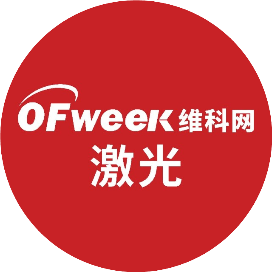Technology as the Foundation | Lyric's Semiconductor Glass Laser Drilling Equipment Drives the Future of Electronic Packaging
With the rapid advancements in cutting-edge technologies such as 5G communication and artificial intelligence, the demand for high-performance electronic products continues to rise, propelling the evolution of advanced packaging technologies. Among these, Through Glass Via (TGV) technology—a groundbreaking innovation in microhole glass substrate fabrication—has demonstrated immense market potential in the modern electronics and semiconductor industries. Particularly in frontier fields such as AI computing packaging, RF (radio frequency), optical communications, and Mini/Micro LED technologies, TGV stands out as a pivotal enabler. Its unique characteristics, including superior high-frequency electrical performance, cost-effectiveness, simplified manufacturing processes, and exceptional mechanical stability, make it a critical pathway toward achieving miniaturized, lightweight, and multifunctional electronic products.
Analysis of TGV Glass Through-Hole Technology
At the core of TGV (Through Glass Via) technology lies the fabrication of through-holes in glass substrates, enabling efficient interconnection between chips. Compared to traditional Through Silicon Via (TSV) technology, TGV offers significant advantages. Firstly, glass, as an insulating material, effectively reduces substrate loss and parasitic effects, ensuring the integrity and reliability of signal transmission. Secondly, the thermal expansion coefficient of glass is adjustable, which helps minimize the risk of thermal mismatches with different materials, thereby enhancing overall system stability. Furthermore, the easy availability of ultra-thin glass substrates and the absence of a need for additional insulating layer deposition make TGV technology simpler in terms of manufacturing processes and more cost-effective. This makes it particularly well-suited for the production of ultra-thin interposers.
Lyric's Key Processes for TGV Through-Hole Fabrication
Despite the promising prospects of TGV technology, the through-hole fabrication process faces numerous challenges, requiring adherence to strict standards such as high speed, high precision, narrow pitch, smooth sidewalls, excellent verticality, and cost efficiency. Currently, laser-induced etching has become the primary method for TGV through-hole production.
Lyric's TGV fabrication process leverages high-energy laser pulses to induce continuous modification zones within the glass, followed by wet etching to rapidly and precisely create glass through-holes. This method ensures both efficiency and accuracy, meeting the demanding requirements of modern electronic packaging technologies.
As of now, Lyric's semiconductor glass laser drilling equipment has reached industry-leading levels across several key performance metrics, providing strong support for the advancement of advanced packaging technologies. Below are the key performance features of this equipment:
Technical Specifications
• Laser Source: Ultrafast laser
• Processing Size: Customizable
• Minimum Hole Diameter: 1.5 μm
• Maximum Aspect Ratio: 1:100
• Positioning Accuracy: < ±2 μm
• Drilling Efficiency: > 5000 points/s
• Glass Thickness: 0.1–1 mm
• Processing Trajectory: Fixed optical path & high-precision motion platform
• Equipment Dimensions: 2220 × 1930 × 2120 mm
• Equipment Weight: < 5.6 tons
Semiconductor Glass Laser Drilling (TGV) Experimental Platform
To further advance the research and application of TGV technology, Lyric has developed an advanced semiconductor glass laser drilling experimental platform. This platform integrates multiple cutting-edge technologies, including a manual loading and unloading system, an industry-leading infrared femtosecond laser, a Bessel beam focusing system, and a vacuum adsorption fixture.
The platform is capable of handling glass substrates of various sizes, ranging from 100×100mm to 360×360mm, and supports glass materials with thicknesses from 0.1mm to 1mm. During process validation in a cleanroom environment, the platform effectively prevents the introduction of dust and impurities, ensuring the cleanliness of the laser processing area and the overall quality of the machining process.
With its outstanding technical performance and innovative process solutions, Lyric's semiconductor glass laser drilling equipment provides robust support for the development of TGV technology. It is poised to play a significant role in the future of electronic packaging.





